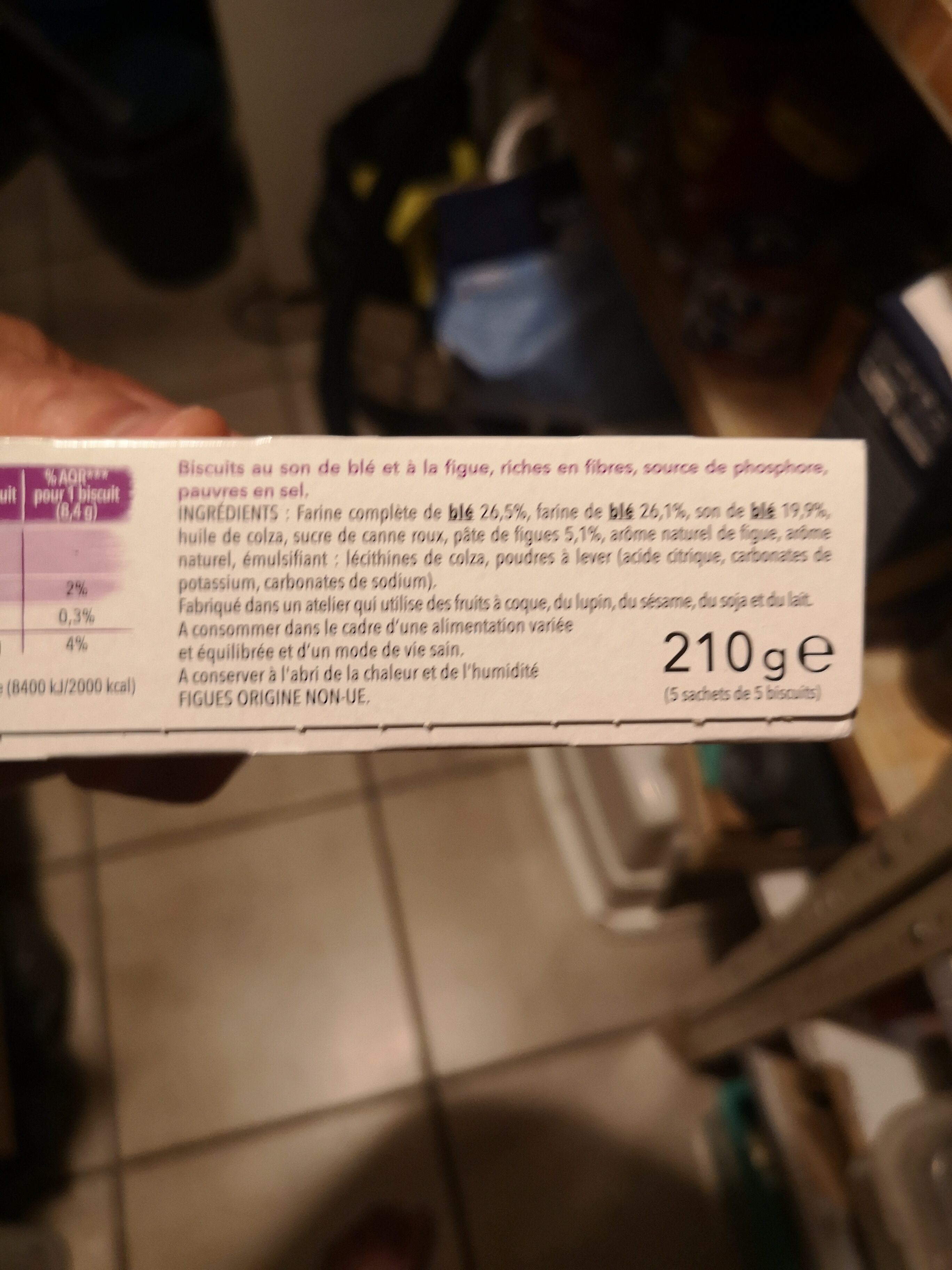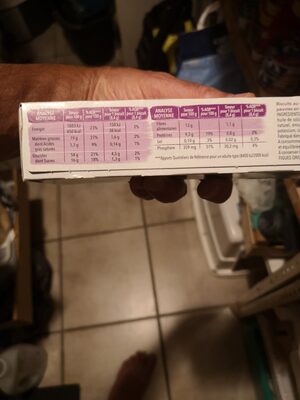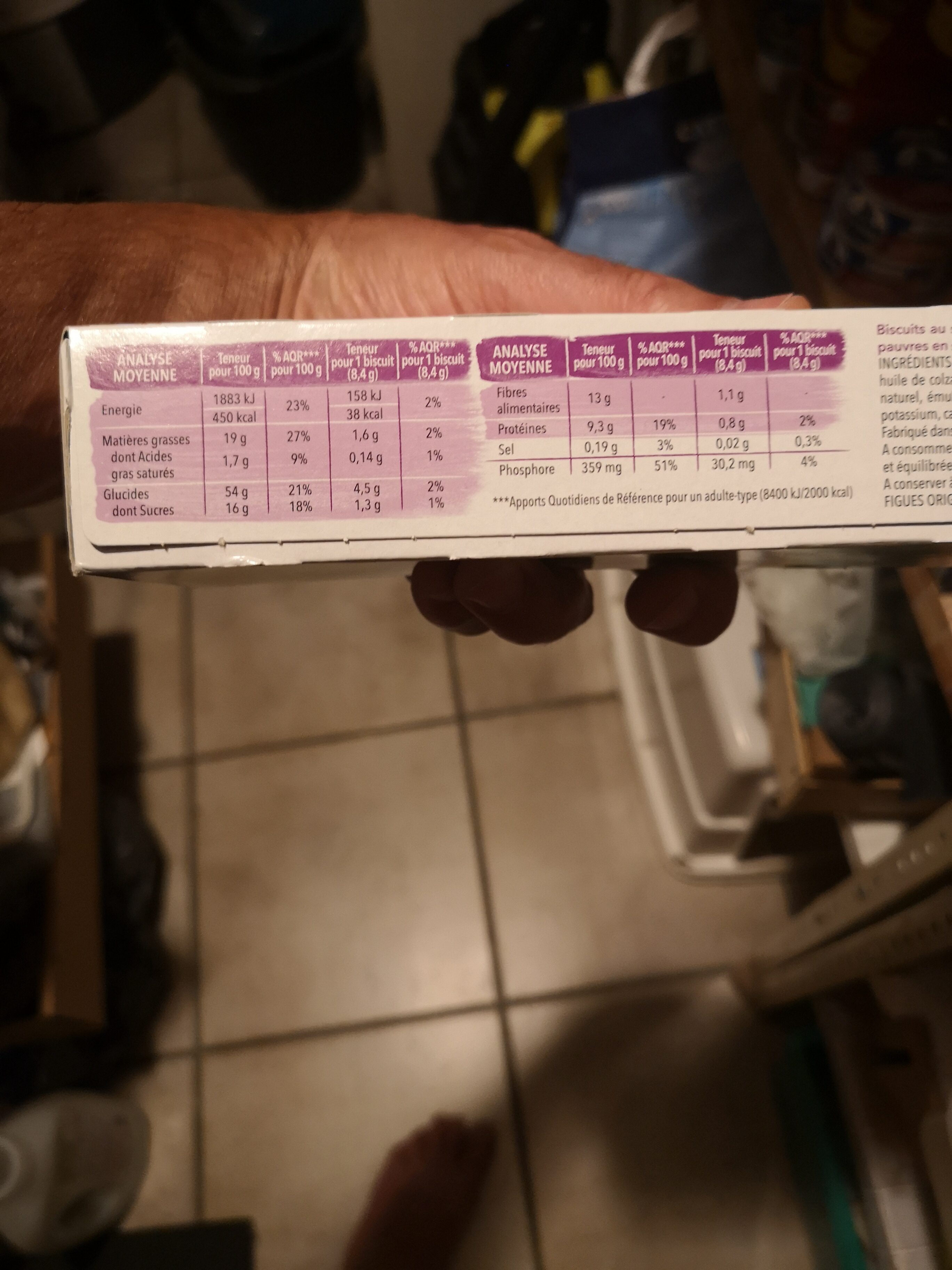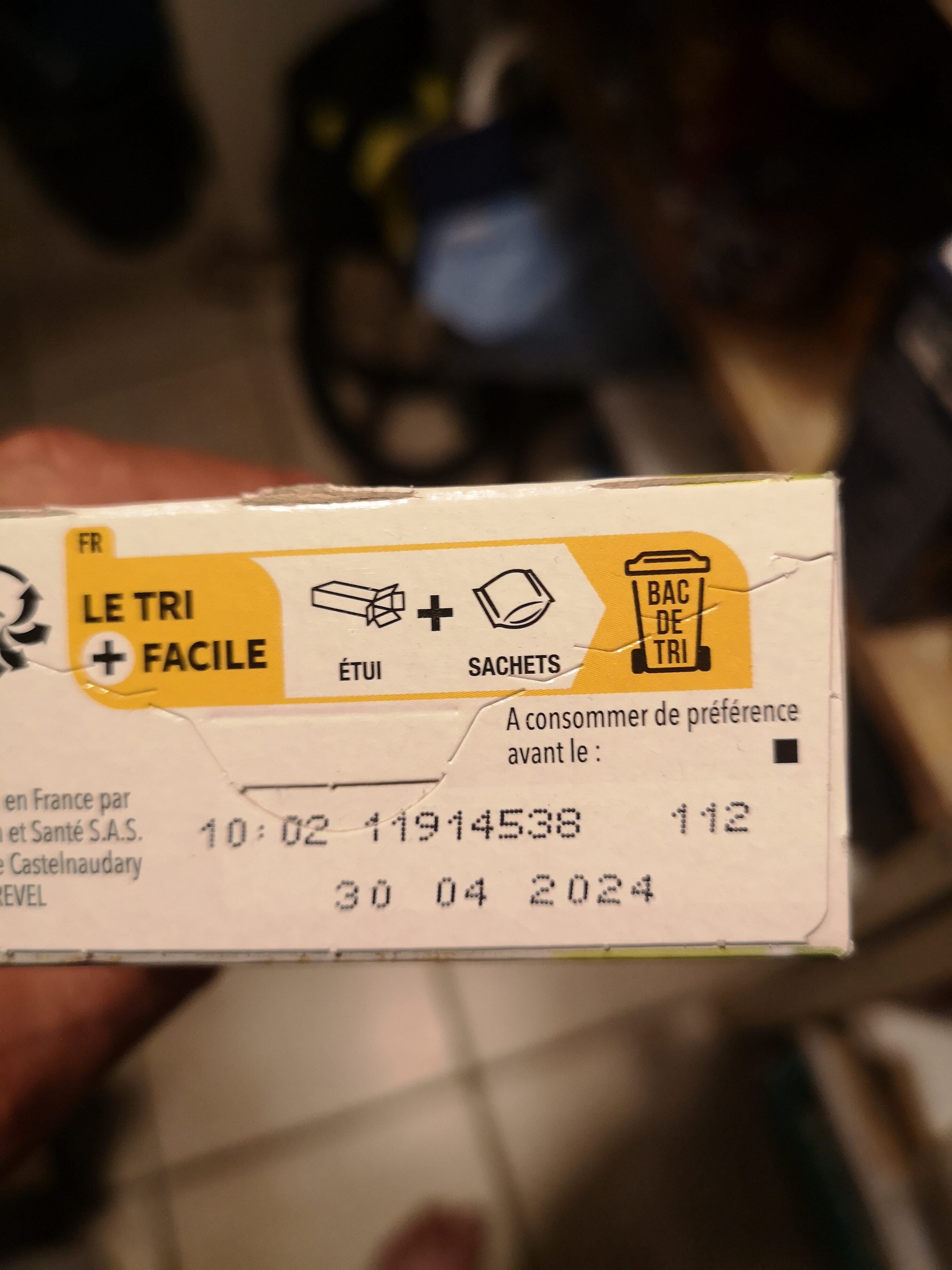Gerble - Fig Bran Cookie, 210g (7.5oz) - 210 g
Barcode: 3251490332080 (EAN / EAN-13)
Common name: Biscuits au son de blé et la figue, riches en fibres, magnesium et phosphore, source de fer, et tres pauvres en sodium.
Quantity: 210 g
Packaging: Plastic, Box, Cardboard, fr:Boîte en carton sachet en plastique, fr:Etui en carton, fr:Film en plastique
Brands: GERBLE
Categories: Snacks, Sweet snacks, Biscuits and cakes, Biscuits, fr:Biscuits au son de blé, fr:Biscuits au son de blé et la figue
Labels, certifications, awards: No preservatives, Made in France, No colorings, No palm oil, Nutriscore, Nutriscore Grade A
Origin of ingredients: fr:Farine de blé: France
Manufacturing or processing places: Revel (31250), Annoray, France
Traceability code: EMB 31250 - Labastide-Clermont (Haute-Garonne, France)
Stores: Franprix, Magasins U, Carrefour, carrefour.fr
Countries where sold: Belgium, France, French Polynesia, Martinique, Morocco, Réunion, Switzerland
Matching with your preferences
Report a problem
Data sources
Product added on by openfoodfacts-contributors
Last edit of product page on by kiliweb.
Product page also edited by beastwithin, date-limite-app, driveoff, ecoscore-impact-estimator, evans, highlander, hungergames, inf, jami, julie-yuka, levox-brintel, magasins-u, manuelw4, menard58, moon-rabbit, mzk, nikezeubi, nutrinet-sante, packbot, pepie, pirouette55, quechoisir, quentinbrd, ramses16, roboto-app, scanbot, sebleouf, segundo, silbon, smoothie-app, tacite-mass-editor, teolemon, tester, thaialagata, yuka.WEljdkg1NWZxNmdMcWM4NnBoSFY2TjlrNXJtTkF6aVFMOHBOSUE9PQ, yuka.WExvbFNLNWR2UGtBbWZZMG9TMzQrdXRjLzhlWkJqL3VPdHNTSVE9PQ, yuka.ZmFwYUtQVmRucWxUd2ZNeThEaU0wZUIwd01DQVQweWFLc1pNSVE9PQ.













